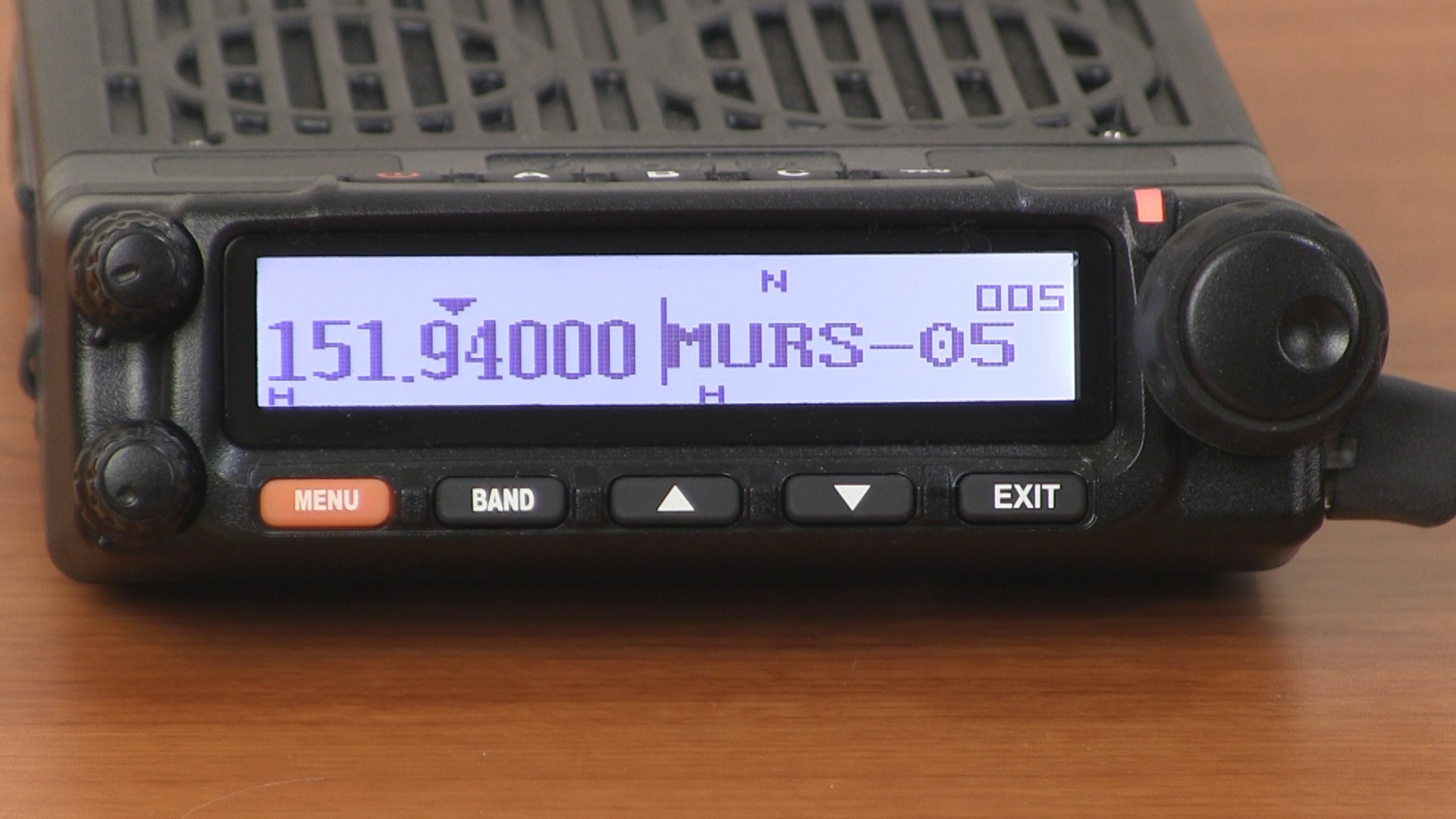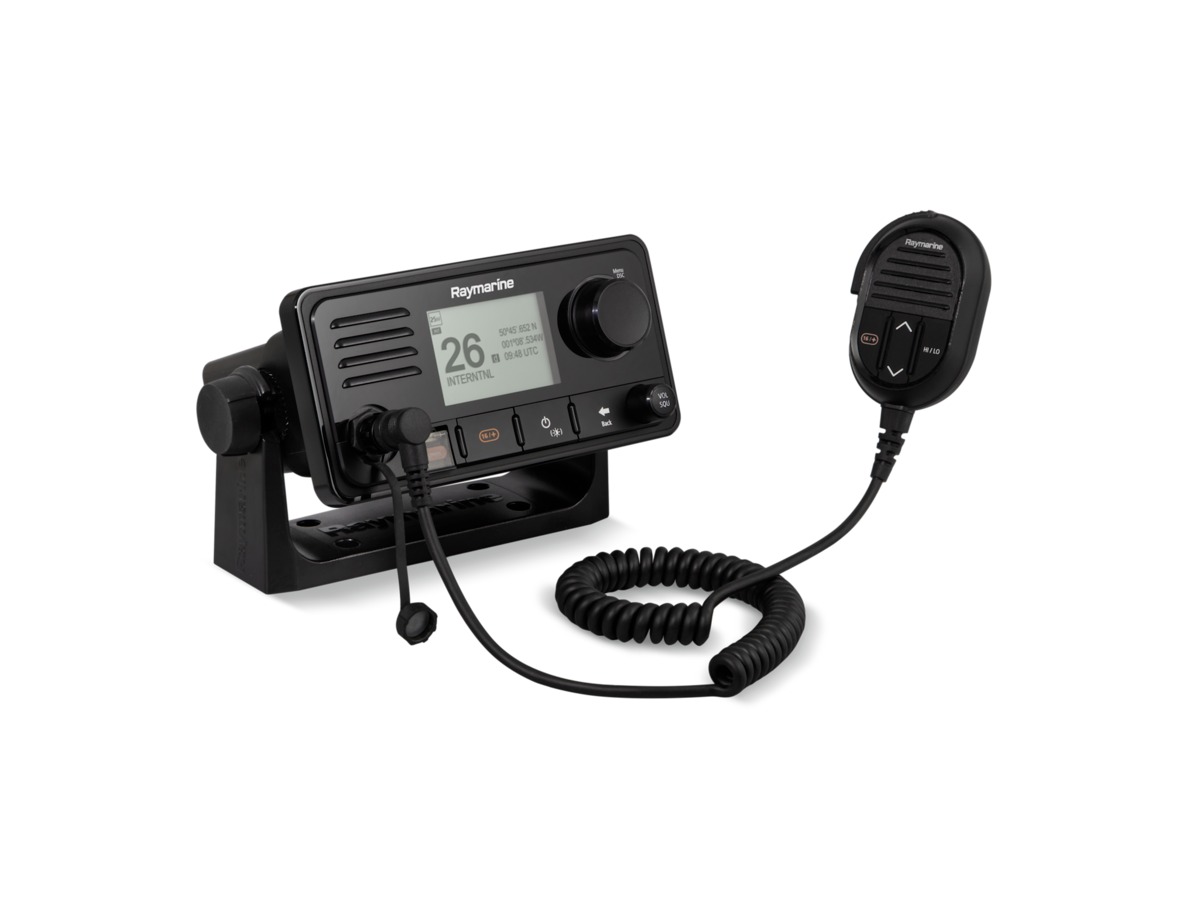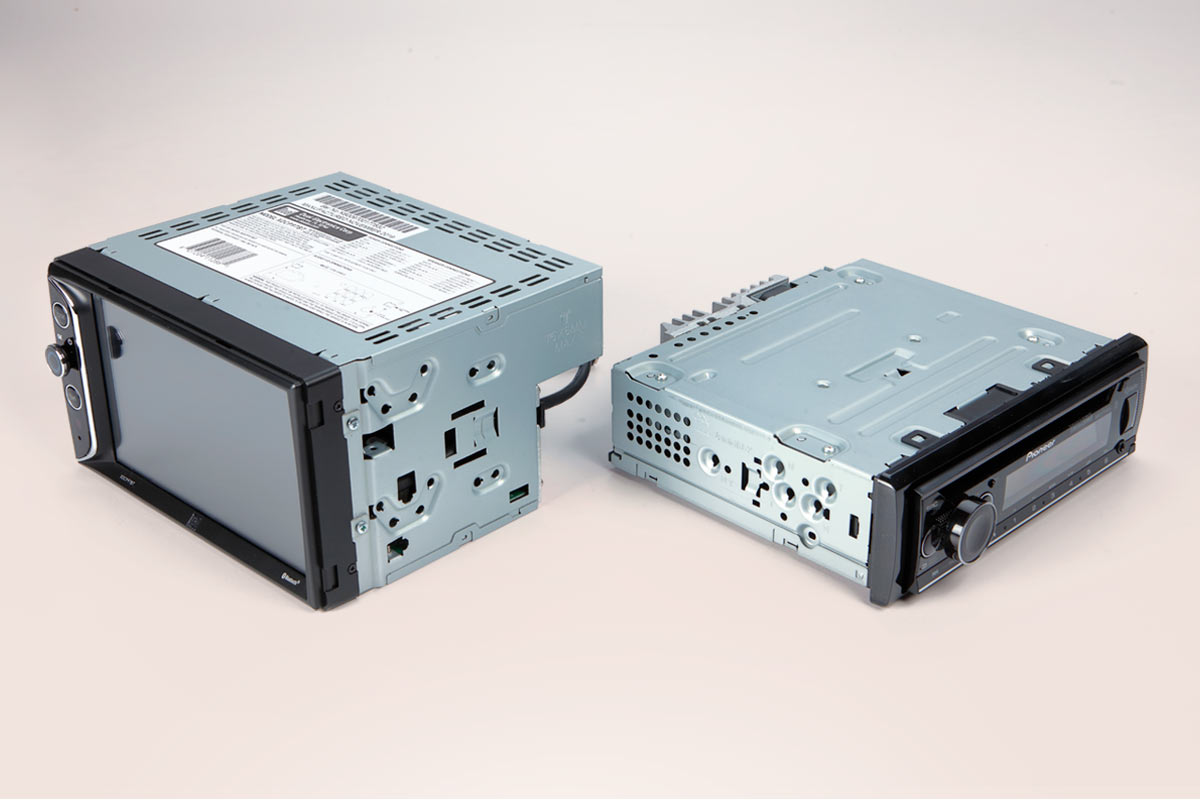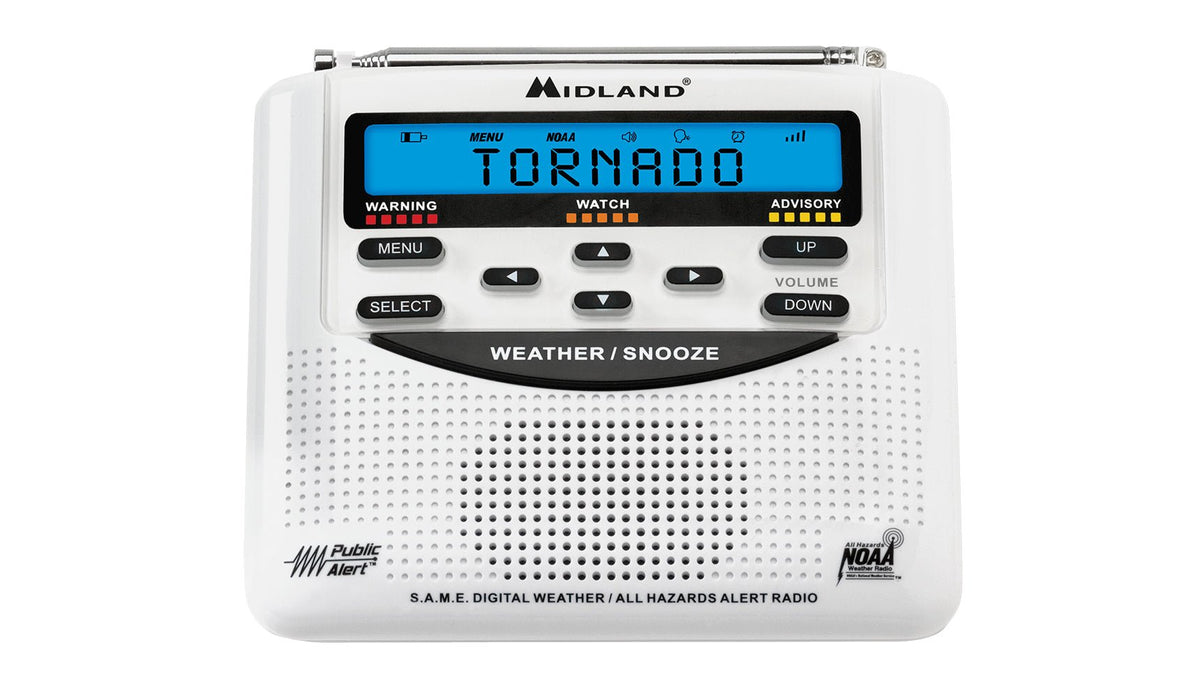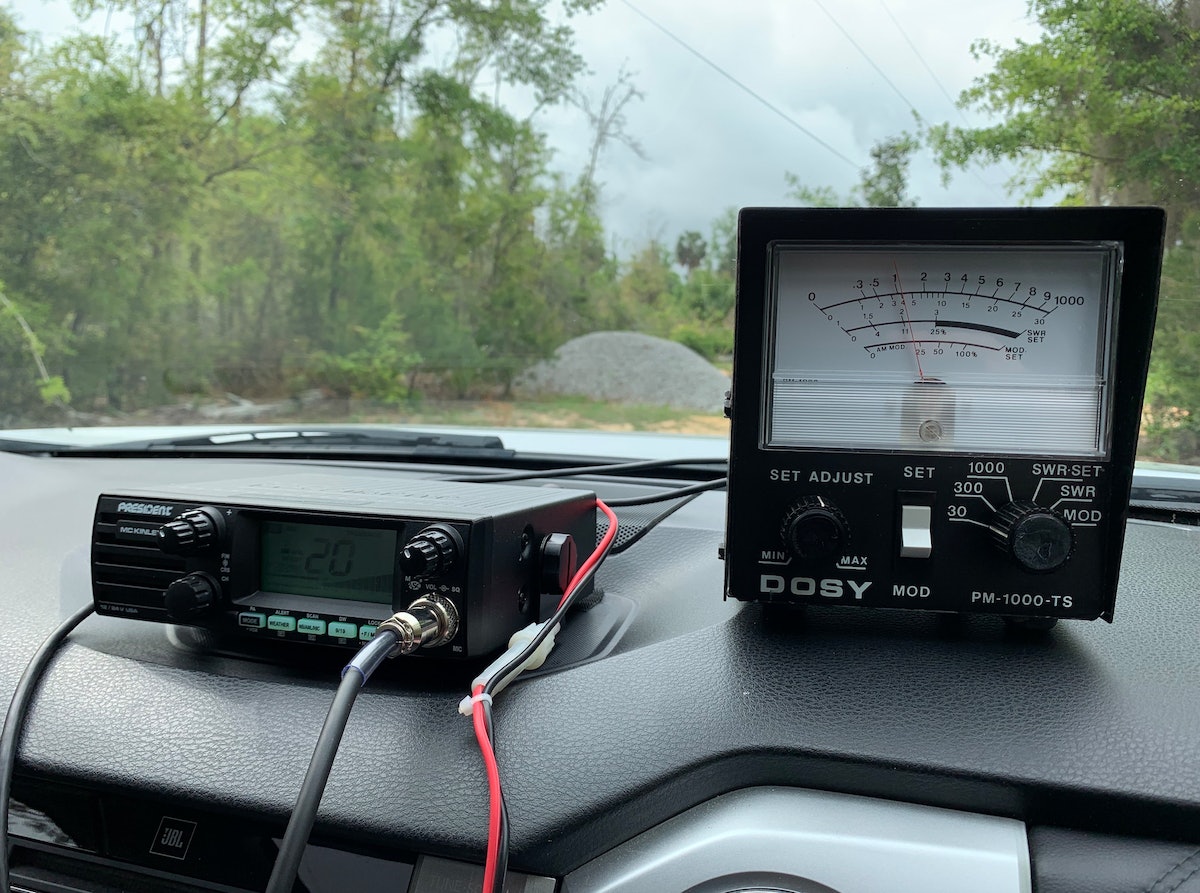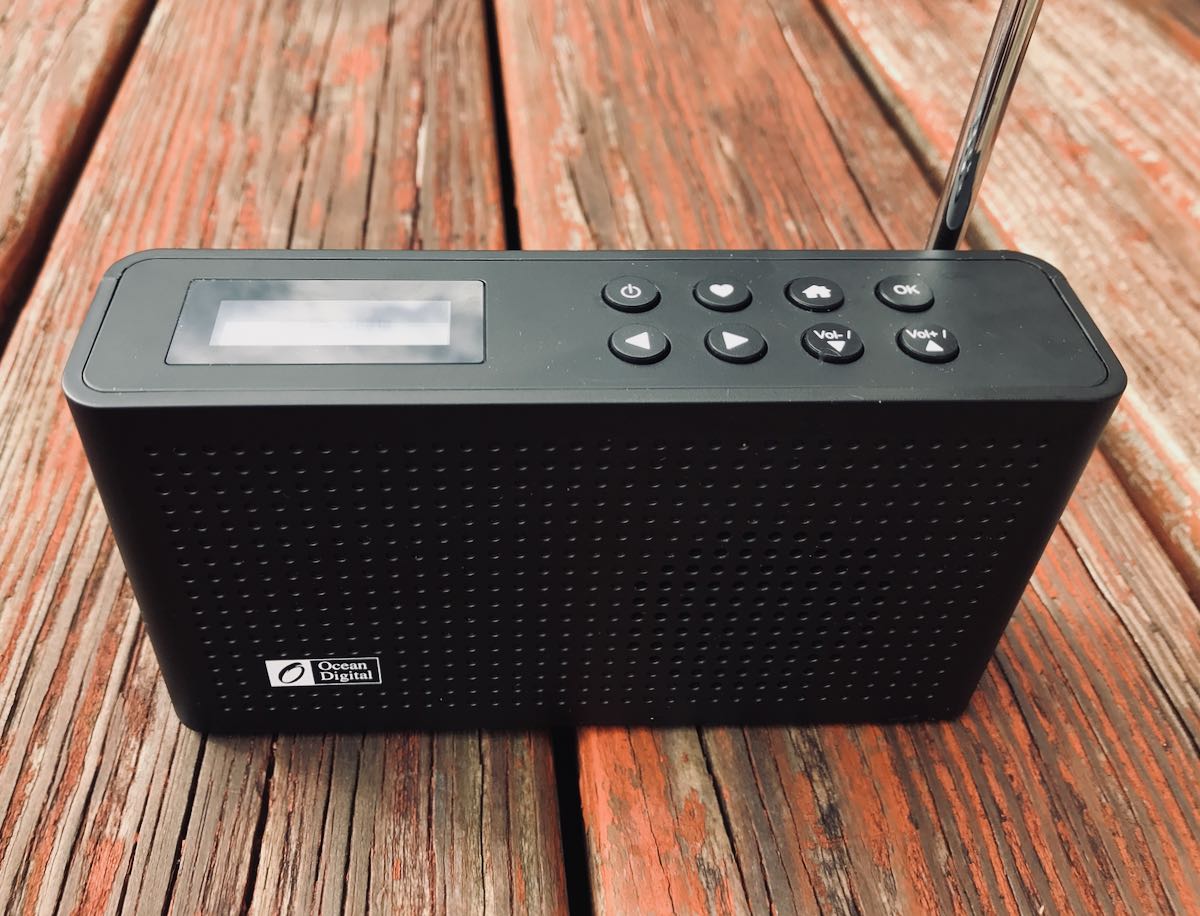Home>Devices & Equipment>Radio>What Is A Radio Repeater


Radio
What Is A Radio Repeater
Published: November 21, 2023
Discover what a radio repeater is and how it enhances radio communication. Learn about the key functions and benefits of using a radio repeater for improved coverage and signal strength.
(Many of the links in this article redirect to a specific reviewed product. Your purchase of these products through affiliate links helps to generate commission for AudioLover.com, at no extra cost. Learn more)
Table of Contents
Introduction
Welcome to the world of radio communication, where technology allows us to connect and transmit messages wirelessly over long distances. In this age of smartphones and internet connectivity, it’s easy to overlook the importance of traditional radio systems. However, when it comes to reliable and efficient long-range communication, radio repeaters play a crucial role.
Whether you’re a fan of walkie-talkies, a radio enthusiast, or a professional in a field that relies heavily on radio communication, understanding what radio repeaters are and how they work is essential. In this article, we will explore the fascinating world of radio repeaters, their types, advantages, applications, and considerations when choosing one.
Radio repeaters are devices used to extend the coverage range of radio transmissions. They receive signals from radios and retransmit them at a higher power, allowing the signal to reach areas that would otherwise be out of range. This amplification and rebroadcasting process is vital for ensuring reliable communication over long distances, making radio repeaters an indispensable tool.
Whether you’re camping in the mountains, working in a remote construction site, or coordinating events in a large venue, radio repeaters provide the necessary boost to ensure clear and uninterrupted communication. They are commonly used in various industries, including emergency services, public safety, transportation, military, and even in recreational activities such as hiking and boating.
Moreover, radio repeaters come in different types and configurations to suit various needs and environments. From simple analog repeaters to advanced digital systems, each offers its own set of features and capabilities. Understanding the different types of repeaters is crucial in choosing the right one for your specific requirements.
In the following sections, we will delve deeper into the workings of radio repeaters, explore their types, highlight their advantages, and discuss common applications. Whether you’re an avid radio user or simply curious about this technology, this article aims to provide you with a comprehensive understanding of radio repeaters and their significance in modern communication systems.
Definition of a Radio Repeater
A radio repeater is a device used in radio communication systems to extend the range and coverage area of radio transmissions. It serves as an intermediary between radios, receiving incoming signals and retransmitting them at a higher power to reach areas that would otherwise be out of range.
The primary function of a radio repeater is to amplify and rebroadcast radio signals, effectively extending the coverage area and improving the reliability of communication. By picking up a weak signal from a transmitting radio and boosting it to a higher power, a radio repeater enables communication over long distances and in areas with obstacles or terrain that would otherwise hinder the signal.
A radio repeater typically consists of a receiver, a transmitter, and a duplexer. The receiver is responsible for picking up the incoming signals from radios within its range. It demodulates the signals and sends the audio or data to the transmitter, which then amplifies and retransmits it. The duplexer is a device that allows the receiver and transmitter to share a common antenna, enabling both functions to work seamlessly.
This amplification and rebroadcasting process is essential for reliable long-range communication, making radio repeaters particularly useful in situations where a direct point-to-point radio transmission is not feasible. They are commonly used in various settings such as remote work sites, large venues, hilly or mountainous terrains, and areas with poor reception.
Radio repeaters can operate on different frequencies, depending on the specific radio system they are designed for. They can be analog or digital, with digital repeaters offering enhanced features such as improved audio quality, higher capacity, and advanced encryption capabilities.
In summary, a radio repeater is a device that extends the coverage area of radio transmissions by amplifying and retransmitting signals at a higher power. It plays a crucial role in ensuring clear and reliable communication over long distances and in challenging environments, making it an indispensable tool in various industries and recreational activities.
How Does a Radio Repeater Work?
Understanding the inner workings of a radio repeater is essential to grasp how it extends the range and coverage area of radio transmissions. At its core, a radio repeater acts as a relay station for radio signals, receiving weak signals from transmitting radios and retransmitting them at a higher power to reach areas that would otherwise be out of range.
The process of how a radio repeater works can be broken down into the following steps:
- Signal Reception: The radio repeater’s receiver picks up the incoming signals from radios within its range. These signals can be voice communications, data, or any type of information that is modulated onto the radio frequency.
- Signal Demodulation: Once the signals are received, the repeater’s receiver demodulates them. Demodulation involves separating the audio or data from the carrier signal, essentially extracting the original information.
- Signal Amplification: After demodulation, the audio or data signal is sent to the repeater’s transmitter. The transmitter amplifies the signal to a higher power level, making it stronger and more capable of traveling longer distances without degradation.
- Signal Transmission: With the signal amplified, the repeater’s transmitter retransmits it from the repeater’s antenna. The antenna broadcasts the signal in a wider coverage area than the original transmitting radio, allowing it to reach areas that were previously out of range.
In addition to these steps, radio repeaters utilize a duplexer to allow the receiver and transmitter to share the same antenna. The duplexer ensures that the signals are properly routed, enabling seamless operation between receiving and transmitting functions. This allows the repeater to work in a continuous cycle of receiving and retransmitting signals, extending the range and coverage area of the radio system.
It’s important to note that repeaters can operate on different frequencies than the transmitting radios. This is known as the input and output frequencies of the repeater. For example, a repeater may receive signals on one frequency, amplify them, and transmit them on a different frequency. This frequency shift ensures that the repeater does not interfere with the transmissions of the radios it is serving.
The operation of a radio repeater is not limited to just extending the range of radio transmissions. It also improves the overall reliability of communication, especially in areas with obstacles or terrain that would otherwise hinder the signal. By retransmitting the signals at a higher power, a radio repeater helps overcome obstacles and ensures that the messages are received clearly, even in challenging environments.
In summary, a radio repeater works by receiving weak signals from radios, demodulating and amplifying them, and retransmitting them at a higher power level. By serving as a relay station, the repeater extends the range and coverage area of radio transmissions, enabling clear and reliable communication over long distances and in challenging environments.
Types of Radio Repeaters
Radio repeaters come in various types, each offering distinct features and capabilities. Understanding the different types of repeaters can help you choose the one that best suits your specific requirements. Here are the most common types of radio repeaters:
- Analog Repeater: Analog repeaters are the traditional type of repeaters that operate on analog radio systems. They receive analog signals, amplify them, and retransmit them at a higher power. Analog repeaters are relatively simple in design and function, making them cost-effective and widely used in many industries.
- Digital Repeater: Digital repeaters are designed to work with digital radio systems, which utilize digital modulation techniques for higher quality audio and enhanced features. These repeaters receive digital signals, decode them, and retransmit them digitally. Digital repeaters offer advantages such as improved audio clarity, increased capacity, advanced encryption capabilities, and compatibility with various digital radio protocols.
- Indoor/Outdoor Repeater: This classification refers to the physical installation environment of the repeater. Indoor repeaters are designed for use within buildings or enclosed spaces and typically have lower power output. Outdoor repeaters, on the other hand, are ruggedized and weather-resistant, capable of withstanding harsh outdoor conditions while providing greater coverage range.
- Bi-Directional Amplifier (BDA): BDAs, also known as signal boosters, are a type of repeater commonly used to enhance the signal strength and coverage of public safety radio systems, such as police, fire, and emergency services. BDAs are often installed in large buildings or structures where signal penetration is a challenge, ensuring that emergency personnel can maintain reliable communication during critical situations.
- Off-Air Repeater: Off-air repeaters, also known as receive-only repeaters or “passive” repeaters, are used to improve signal quality and coverage in areas with weak or intermittent signals. These repeaters receive the existing signal from a nearby transmitter and retransmit it at a higher power. Off-air repeaters are commonly used in rural areas, remote locations, or areas with geographical obstacles that hinder the original signal.
It’s important to note that the selection of the appropriate repeater type depends on factors such as the radio system being used, the coverage area required, the specific environment in which the repeater will be deployed, and the desired features or capabilities. Consulting with a radio communication professional or provider can help determine the most suitable repeater type for your needs.
In summary, the different types of radio repeaters include analog repeaters, digital repeaters, indoor/outdoor repeaters, bi-directional amplifiers (BDAs), and off-air repeaters. Each type offers specific functions and features, allowing for an optimized solution to extend the range and coverage of radio communications in different scenarios.
Advantages of Using a Radio Repeater
Radio repeaters offer several advantages that make them a valuable tool in radio communication systems. Whether you’re in a professional setting or enjoying recreational activities, utilizing a radio repeater can significantly enhance your communication experience. Here are some key advantages of using a radio repeater:
- Extended Range: The primary benefit of a radio repeater is the extension of communication range. By receiving weak signals from radios and retransmitting them at a higher power, repeaters allow communication over long distances that would be otherwise impossible with direct point-to-point transmissions. This extended range enables users to maintain contact and coordination even in challenging environments.
- Improved Signal Strength: In areas with obstacles, such as tall buildings, dense foliage, or hilly terrain, radio signals may struggle to penetrate and maintain a strong connection. A repeater amplifies the signal, overcoming obstacles and providing a clearer and stronger signal to reach receivers in those obstructed areas. This improved signal strength ensures reliable communication, minimizing the risk of dropped calls or garbled transmissions.
- Enhanced Coverage: By retransmitting signals, radio repeaters expand the coverage area of a radio system. This broader coverage is particularly advantageous in large venues such as stadiums, convention centers, or sprawling work sites where reliable communication across different areas is essential. It allows users to stay connected and maintain communication throughout the entire coverage area.
- Greater Flexibility: Using a radio repeater adds flexibility to communication systems by enabling communication in remote or hard-to-reach locations. Whether you’re in a remote construction site, a remote wilderness area, or on the open sea, a repeater ensures that you can communicate effectively regardless of the distance or location. This flexibility is crucial in industries such as emergency services, transportation, and remote work environments.
- Improved Reliability: Radio repeaters enhance the overall reliability of communication by reducing the chances of signal loss or interference. In areas with weak or inconsistent signals, repeaters ensure that messages are received clearly, minimizing communication breakdowns and ensuring that critical information is conveyed accurately. This enhanced reliability is especially crucial in emergency situations or when coordination in challenging environments is necessary.
These advantages highlight the importance of incorporating radio repeaters into communication systems. Whether it’s improving signal strength, extending range, expanding coverage, increasing flexibility, or enhancing reliability, radio repeaters provide a valuable solution for effective and efficient communication.
It’s worth noting that the specific advantages of using a radio repeater may vary depending on factors such as the type of repeater used, the radio system in place, the terrain and environment, and the specific requirements of the user. Consulting with professionals in the field can help determine the ideal repeater solution for your communication needs.
In summary, the advantages of using a radio repeater include extended range, improved signal strength, enhanced coverage, greater flexibility in remote locations, and improved reliability. Incorporating a radio repeater into communication systems ensures clear and reliable communication, allowing users to stay connected and coordinate effectively across various environments and distances.
Common Applications of Radio Repeaters
Radio repeaters find applications in various industries and activities where reliable long-range communication is crucial. From public safety and emergency services to commercial operations and recreational pursuits, radio repeaters play a vital role in ensuring clear and effective communication. Here are some common applications where radio repeaters are widely used:
- Emergency Services: Police departments, fire departments, and emergency medical services heavily rely on radio repeaters to maintain constant communication during emergencies. By extending the range and coverage area, repeaters enable responders to coordinate their efforts and relay critical information, improving the overall efficiency and effectiveness of emergency operations.
- Public Safety: Beyond emergency services, radio repeaters are also employed by public safety agencies such as park rangers, security personnel, and event organizers. By enhancing communication range and coverage, repeaters ensure the safety of the general public, facilitate effective crowd management, and enable quick response to any incidents or emergencies.
- Transportation: In the transportation industry, radio repeaters are used in various settings such as airports, seaports, railways, and trucking companies. These repeaters provide reliable communication between pilots, ground crews, harbor masters, train operators, and truck drivers, enabling smooth coordination and ensuring the safety and efficiency of transportation operations.
- Construction and Industrial Sites: Construction sites, manufacturing plants, and industrial facilities often span large areas, making effective communication a challenge. Radio repeaters help address this by extending the coverage area, allowing supervisors, managers, and workers to communicate seamlessly across the site, promoting safety, productivity, and smooth coordination of tasks.
- Event Management: Whether it’s a music festival, sporting event, or convention, radio repeaters play a critical role in event management. They provide reliable communication between staff members, security teams, and organizers, ensuring smooth operations, quick response to incidents or emergencies, and effective coordination of various event-related tasks.
- Recreational Activities: Radio repeaters are also used in recreational activities such as boating, hiking, and skiing. They allow groups to stay connected and coordinate their activities, whether it’s keeping track of each other on a boating trip, communicating between skiers on different slopes, or maintaining contact while exploring remote hiking trails.
These are just a few examples of the many applications where radio repeaters are invaluable tools for reliable and effective communication. The specific use cases may vary depending on the industry, environment, and communication requirements. It’s crucial to assess the specific needs of your application and choose the appropriate repeater to ensure optimal communication performance.
In summary, radio repeaters are widely used in emergency services, public safety, transportation, construction, event management, and recreational activities. By extending range, improving coverage, and enhancing communication reliability, repeaters enable efficient communication, ensure safety, and facilitate smooth coordination in a variety of industries and situations.
Considerations When Choosing a Radio Repeater
When selecting a radio repeater for your communication needs, several factors should be taken into consideration to ensure it meets your specific requirements. Here are some key considerations to keep in mind when choosing a radio repeater:
- Frequency Compatibility: The radio repeater you choose should be compatible with the frequencies used by your radios. Consider the frequency band and modulation type of your radio system to ensure seamless integration and proper operation.
- Power Output: Evaluate the power output capabilities of the repeater. Depending on your coverage requirements, you may need a repeater with higher or adjustable power output to ensure adequate signal strength throughout the desired coverage area.
- System Compatibility: Ensure that the repeater you choose is compatible with your existing radio system. Consider factors such as the technology (analog or digital) and the specific protocols or standards used by your radios to ensure seamless integration and compatibility.
- Coverage Area: Assess the size and characteristics of the area you need to cover. Consider factors such as terrain, obstacles, and buildings to determine the appropriate repeater type and power output needed to effectively extend coverage in your specific environment.
- Scalability: If you anticipate future expansion or increased communication needs, consider the scalability of the repeater system. Look for repeaters that allow for easy expansion or the addition of extra channels or frequencies to accommodate future growth.
- Special Features: Determine if there are any specific features or capabilities that you require. This can include advanced encryption for secure communications, noise suppression for better audio quality, or remote management and monitoring capabilities to ensure efficient operation and maintenance of the repeater system.
- Reliability and Durability: Choose a radio repeater that is built to withstand the environmental conditions of your application. Consider factors such as ruggedness, weatherproofing, and resistance to dust, humidity, and temperature variations.
- Service and Support: Evaluate the availability of technical support, warranty options, and after-sales service from the repeater manufacturer or distributor. Having reliable support ensures prompt resolution of any issues that may arise and gives you peace of mind knowing that assistance is readily available.
Taking these considerations into account will help you choose a radio repeater that is well-suited to your specific needs, ensuring optimal performance and seamless integration with your existing communication system.
In summary, important considerations when choosing a radio repeater include frequency compatibility, power output, system compatibility, coverage area, scalability, special features, reliability, durability, and available service and support. By carefully evaluating these factors, you can select a repeater that meets your requirements and provides reliable and effective communication for your specific application.
Conclusion
Radio repeaters play a vital role in extending the range and coverage area of radio transmissions, ensuring clear and effective communication in various industries and activities. By receiving weak signals from radios and retransmitting them at a higher power, repeaters enable communication over long distances and in challenging environments where direct point-to-point transmissions would not be possible.
In this article, we explored the definition and working principles of radio repeaters. We discussed the different types of repeaters, including analog repeaters, digital repeaters, indoor/outdoor repeaters, bi-directional amplifiers (BDAs), and off-air repeaters. Each type offers specific functions and features to cater to different communication needs.
We also highlighted the advantages of using radio repeaters, such as extended range, improved signal strength, enhanced coverage, increased flexibility, and improved reliability. These advantages are critical in industries such as emergency services, public safety, transportation, construction, event management, and recreational activities.
When choosing a radio repeater, it’s important to consider factors such as frequency compatibility, power output, system compatibility, coverage area, scalability, special features, reliability, durability, and available service and support. Taking these considerations into account ensures that the repeater you select meets your specific requirements and integrates seamlessly with your existing communication system.
Whether you’re an emergency responder, a business owner, or an outdoor enthusiast, incorporating a radio repeater into your communication setup can greatly enhance your ability to communicate effectively over long distances and in challenging environments.
In conclusion, radio repeaters are indispensable tools that extend the range, improve signal strength, and enhance the reliability of radio communications. They enable efficient coordination, safer operations, and seamless communication in various industries and recreational activities, ultimately improving overall communication performance and ensuring successful outcomes.

